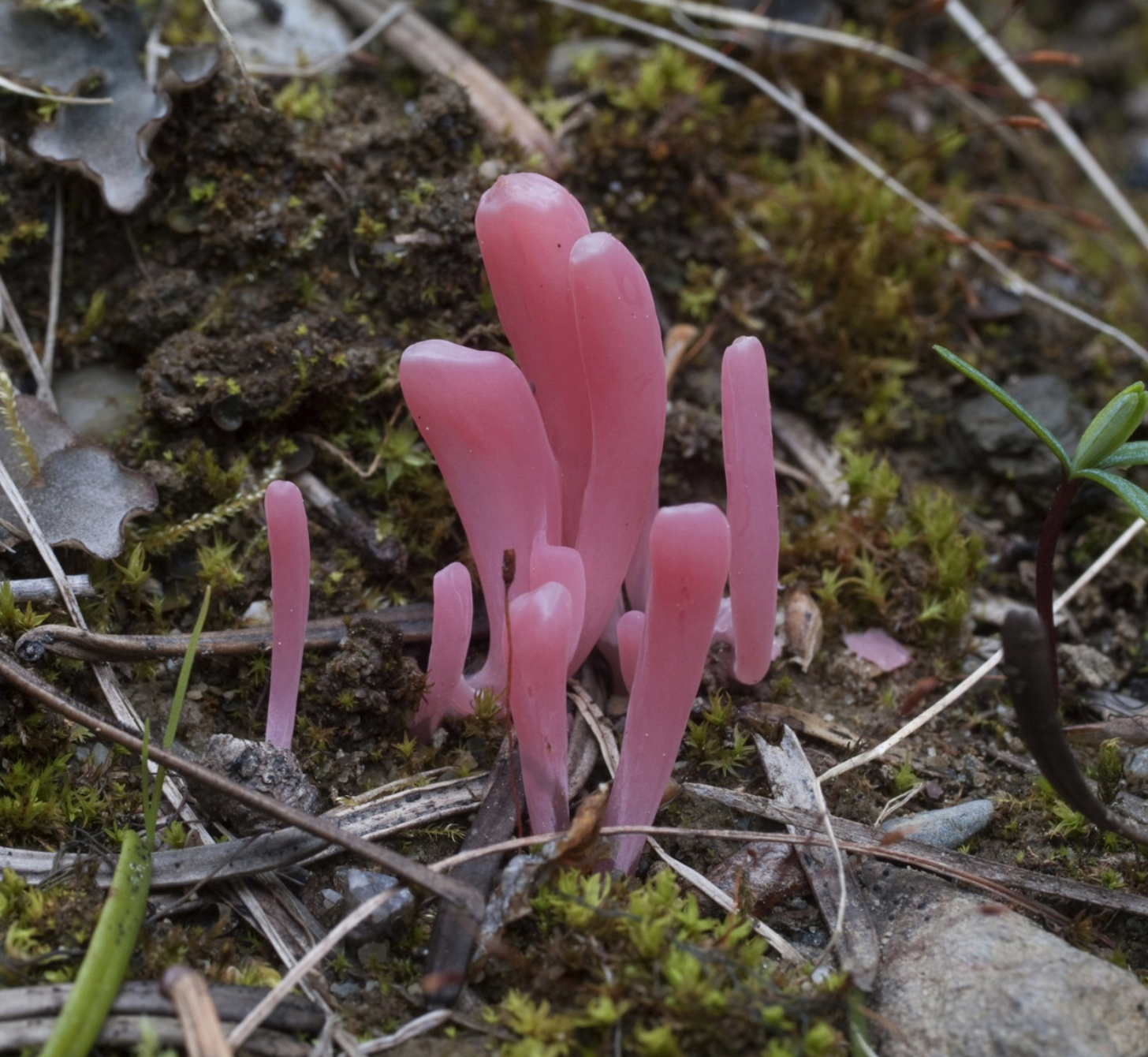What is there not to love about coral fungi? The morphology of many of these forest floor inhabitants intrigue those of us who aren’t even interested in mycology. They just look so cool! I always stop and snag a few pics every time I encounter a coral. They’re quite photogenic with their arms extending upwards to the sky, allowing pronounced contrast between shadow and light. This is yet another fungal friend I’ve entered on my bucket species list, and for good reason.
Speaking of fungal lists, Clavaria rosea is found on national Red Lists of threatened fungi in multiple countries throughout most of Europe and Asia. This particular species is surprisingly rare, which is a contrary notion once we examine its near global distribution. Like many other species of coral fungi, Clavaria rosea tends to fruit in unperturbed old-growth habitats amongst moss and grass. Habitat degradation and the deforestation of these timber-rich, old-growth ecosystems are a main reasons for the reduction of this incredible little species.
Clavaria rosea. Found by Drew Parker.
An imperative idea when it comes to the conservation of our planet’s species, is to protect and preserve all species, not just ones that provide us with a service/product, or just the widely known charismatic species. Many little species of fungi get stomped on both literally and figuratively by humans. Species that don’t provide any products for a human financial gain tend to get put on the back burner. Additionally, those charismatic species that the majority of the population can identify like the panda and bald eagle get much of the funds through conservation organizations. This is a clear fallacy in our thinking, and it is time that everyone realizes the importance of protecting all threatened species.
A major theme in this blog is the reoccurring concept that we are just scratching the surface. Not just ecological, not just medicinally, but from all angles, we only have slightly revealed the complexity of our planet’s forests. Now you’re probably thinking that Clavaria rosea is one of those species that doesn’t provide us with a particular ecological service based on the flow of the last paragraph. And this would be true, if a few researchers didn’t test the potential antibacterial properties of Clavaria rosea just five years ago. Ashok Chittaragi and his team of scientists produced three different extracts from Clavaria rosea and tested these extracts against nine different prevalent pathogenic bacteria, both gram positive and negative.
Clavaria rosea found by Beata Bilska-Zaleska in Poland.
Their results show that all nine bacterial species were inhibited by these fungal extracts to a varying degree! In this menacing era of superbugs (antibiotic resistant bacteria), protecting our forests and the fungi and plants that live there may be our last hope to win the war on these dangerous microbes.
Even if Clavaria rosea didn’t have antimicrobial properties, we still need to understand the importance of conserving it. We need to band together and help protect all species. Let’s rid this conservation fallacy of only protecting species that can provide us with something, or the mascot charismatic panda species. Remember that we are just scratching the surface, and that just five years ago, we were unaware of the potential this little fungus has to fight resilient strains of bacteria.
[Link 1]




